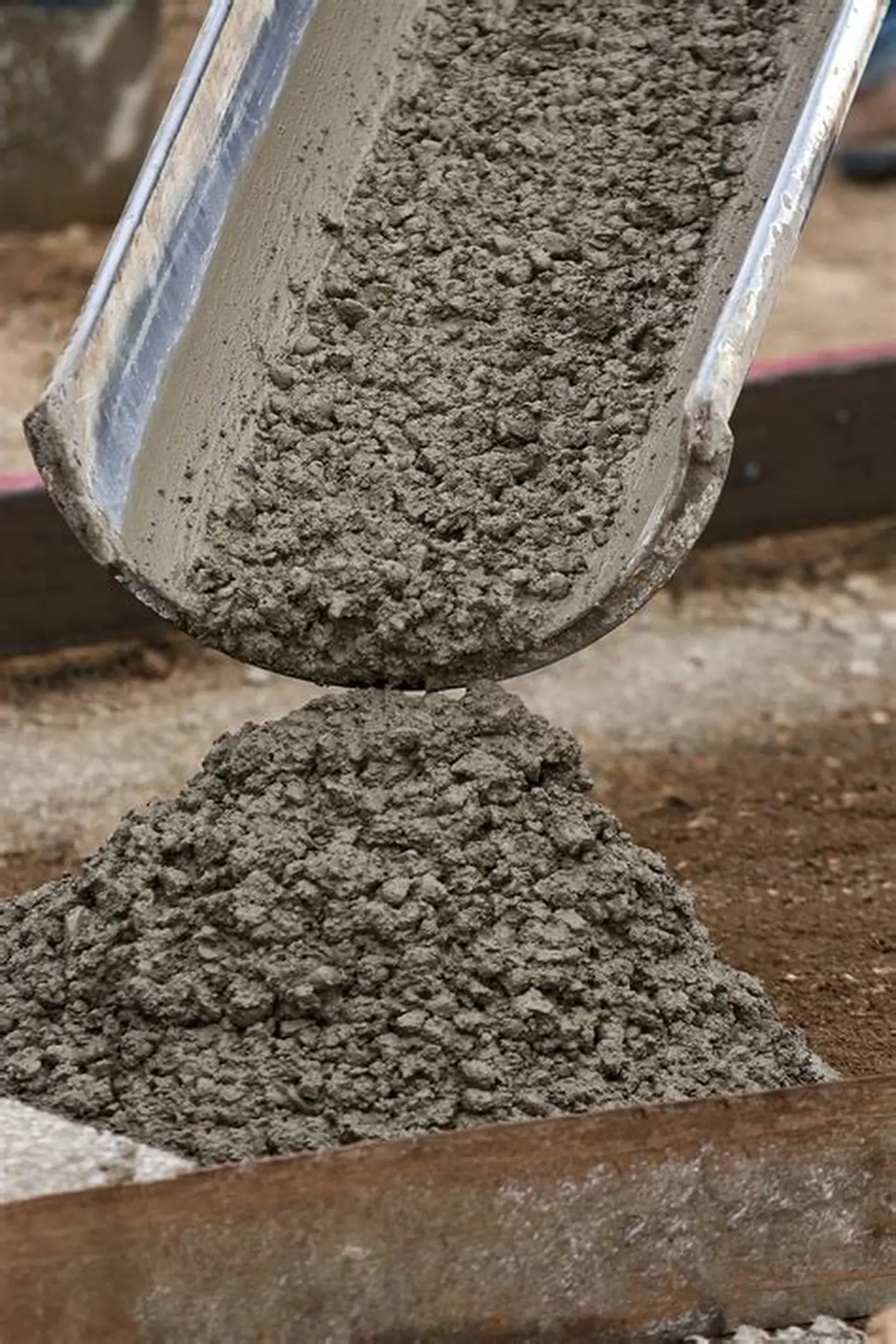Lignosulfonate, a natural byproduct of the sulfite pulping process in the paper and pulp industry, is a remarkably versatile, eco-friendly, and cost-effective material widely used as a chemical admixture in concrete production. Derived from lignin, a component of plant cell walls that gives wood its strength, lignosulfonate is created when wood is processed to separate cellulose for papermaking. This water-soluble, biodegradable, and non-toxic compound is prized in the concrete industry for its ability to act as a water reducer and plasticizer, making concrete mixes easier to work with while improving the strength, durability, and overall quality of the final product. Its affordability, environmental safety, and adaptability make it a go-to choice for a wide range of construction projects, from small home foundations and driveways to massive infrastructure like bridges, highways, and dams. Additionally, as you mentioned in previous queries, lignosulfonate’s role in dust control highlights its multi-purpose nature, binding particles in both concrete and on dusty surfaces like roads or construction sites.
How Lignosulfonate Works in Concrete
Concrete is made by mixing cement, water, aggregates (like sand, gravel, or crushed stone), and sometimes additives to get the right texture, strength, and setting time for a project. Lignosulfonate is one of those additives, typically added as a liquid during the mixing process at a concrete plant or on a construction site. Its main job is to act as a water reducer, which means it helps create a smooth, workable concrete mix with less water. Using less water is a big deal because too much water in concrete can lead to weak spots, cracks, or a shorter lifespan for things like roads, buildings, or bridges.
Here’s how it works in simple terms: when you mix cement with water, the tiny cement particles tend to stick together in clumps because they’re attracted to each other, kind of like how static makes clothes cling together. These clumps trap water, making the concrete mix thick and stiff, which forces workers to add more water to make it easier to pour or shape. But extra water weakens the concrete. Lignosulfonate solves this by acting like a separator. Its molecules have a negative charge that surrounds the cement particles, pushing them apart and breaking up the clumps. This releases the trapped water, making the mix smoother and more fluid without needing to add extra water. The result is a concrete mix that’s easier to pour into molds, pump through hoses, or spread evenly, all while keeping the strength and durability you need.
Lignosulfonate also has a secondary benefit: it can act as a mild set retarder, slowing down how fast the concrete hardens. This is super helpful in hot weather, where concrete can set too quickly and crack, or for big projects, like pouring a huge foundation or a long stretch of highway, where workers need extra time to get everything in place. The amount of lignosulfonate used is small—usually about 0.1% to 0.5% of the cement’s weight—but it makes a big difference. Contractors figure out the exact amount based on things like the type of cement, the kind of aggregates, the weather, and what the concrete is being used for, whether it’s a small patio or a skyscraper’s support beams.
Mixing lignosulfonate into concrete is pretty straightforward. It’s added at the concrete plant or on-site using standard equipment like concrete mixers or trucks. Workers adjust the mix based on the job’s needs—say, making it extra flowy for pumping up a tall building or keeping it thick for a heavy-duty floor. Because lignosulfonate comes from a natural source (wood), it’s consistent and reliable, but testing the mix beforehand is common to make sure everything works together perfectly.
Why Lignosulfonate Is a Great Choice for Concrete
Lignosulfonate brings a ton of benefits to concrete, making it a favorite for contractors, engineers, and builders:
- Easier to Work With: Lignosulfonate makes concrete flow better, so it’s easier to pour into molds, pump through long hoses, or spread out for things like flat floors or curved walls. This saves time and effort, especially on tricky jobs like tall buildings or intricate designs.
- Stronger and Tougher Concrete: By using less water, lignosulfonate creates denser concrete with fewer tiny holes or weak spots. This makes the concrete stronger and better able to handle things like heavy traffic, freezing winters, or exposure to chemicals, so structures last longer without cracking or crumbling.
- Saves Money: Lignosulfonate is cheap because it’s a byproduct of papermaking, not a fancy lab-made chemical. This makes it perfect for big projects or tight budgets, like fixing rural roads, building affordable homes, or pouring concrete for large factories.
- Good for the Planet: Lignosulfonate is natural, breaks down over time, and doesn’t harm people, plants, or animals. It also reduces the amount of water and cement needed, which cuts down on the energy and pollution from cement production—a process that creates a lot of carbon dioxide, a major contributor to climate change.
- Works for All Kinds of Projects: Lignosulfonate can be used in regular concrete for houses, precast concrete for factory-made blocks or pipes, high-strength concrete for bridges, or even mortar for laying bricks. It’s super versatile.
- Helps in Hot Weather or Big Pours: Its slight slowing of the hardening process gives workers more time to pour and finish concrete, which is a lifesaver in hot climates or for huge projects like dams or parking lots where rushing can lead to mistakes.
- Mixes Well with Other Additives: Lignosulfonate gets along with other concrete additives, like ones that add air bubbles to protect against freezing or speed up hardening for cold weather, letting builders customize the mix for any job.
- Keeps the Mix Uniform: It helps prevent problems like segregation (where gravel sinks to the bottom) or bleeding (where water rises to the top), which can mess up the concrete’s look or strength. This means smoother surfaces and better-quality results.
- Supports Green Building: Using lignosulfonate aligns with eco-friendly construction trends, like those for LEED certification, because it’s sustainable and reduces the environmental impact of building.
Things to Watch Out For
Lignosulfonate is great, but it’s not perfect, and there are a few things to keep in mind when using it:
- Not as Strong as Some Newer Additives: Lignosulfonate can cut water use by about 5-10%, which is good but not as much as modern synthetic additives (called superplasticizers) that can cut water by 20-30%. For super-strong concrete, like in tall buildings or heavy bridges, you might need those instead.
- Can Slow Hardening Too Much: The slight delay in setting time can be a problem for projects that need to move fast, like building in cold weather or on tight schedules. Contractors might need to add something to speed up the process if that’s an issue.
- Results Depend on the Mix: How well lignosulfonate works can vary based on the cement, gravel, sand, or even the weather. For example, humid or cold conditions might affect how the concrete sets, so testing the mix beforehand is a smart move.
- Might Add Air Bubbles: Lignosulfonate can sometimes trap tiny air bubbles in the concrete, which could make it slightly weaker or affect the surface’s smoothness. Careful mixing and testing can keep this under control.
- Color or Smell Issues: Some lignosulfonate products might give the concrete a slight brownish tint or a faint smell, which could be a problem for fancy projects where the concrete needs to look perfect, like decorative floors or exposed walls.
- Needs to Work with Other Ingredients: In rare cases, lignosulfonate might not play nicely with certain cements or other additives, so contractors need to test everything to make sure it all works together.
To avoid these issues, builders usually do trial mixes in a lab or on-site to find the right amount of lignosulfonate and make sure it fits with the rest of the mix. For projects needing extra strength or special features, lignosulfonate can be combined with other additives to get the best of both worlds.
Where Lignosulfonate Is Used in Concrete
Lignosulfonate is used in all sorts of concrete projects, showing how flexible and practical it is:
- Homes and Small Buildings: For things like house foundations, driveways, patios, or sidewalks, lignosulfonate makes ready-mix concrete easier to pour and stronger when it sets. In 2021, a housing project in Texas used lignosulfonate for 200 home foundations, saving 8% on water and getting a smoother finish that cut down on extra work to make the surfaces look good.
- Big Infrastructure Projects: Bridges, highways, tunnels, dams, and airports use lignosulfonate to make concrete easier to work with and to control how fast it hardens, especially in hot weather. In 2020, a bridge in India used lignosulfonate to pour concrete in 90-degree heat, keeping it from setting too fast and avoiding cracks that could weaken the structure.
- Precast Concrete Products: Factories that make concrete pipes, blocks, panels, or beams use lignosulfonate to get smooth, consistent mixes that pop out of molds easily. A 2022 plant in Canada saw fewer defects and better-looking surfaces on their concrete blocks after switching to lignosulfonate, saving money on repairs and rejections.
- Bricklaying and Repairs: In mortar for laying bricks or grout for filling gaps, lignosulfonate makes the mix flow better and stick to surfaces like bricks or tiles. A 2019 project in the UK used lignosulfonate in mortar to restore an old historic building, making it easier to work with traditional materials while keeping the look authentic.
- Farm Structures: In rural areas, lignosulfonate is used in concrete for things like barns, silos, cattle pens, or irrigation ditches because it’s cheap and safe for the environment. A 2023 farm in Australia built a tough, low-cost irrigation system with lignosulfonate-treated concrete that held up in harsh, dry conditions.
- Industrial Floors and Pavements: Warehouses, factories, and heavy-duty parking lots use lignosulfonate to make strong, durable concrete floors that can handle heavy machinery or constant traffic. A 2022 factory in Ohio poured a lignosulfonate-treated concrete floor that stood up to forklifts and heavy equipment without cracking.
- Specialty Projects: Lignosulfonate is also used in things like shotcrete (sprayed concrete for tunnels, pools, or retaining walls), lightweight concrete for insulation, or decorative concrete for fancy designs. A 2021 park project in California used lignosulfonate in decorative concrete for a sculpted fountain, making it easier to shape and stronger over time.
Wrapping Up
Lignosulfonate is a natural, budget-friendly, and eco-friendly additive that makes concrete easier to pour, stronger, and longer-lasting. By cutting down on water, improving how the mix flows, and giving workers more time to work in hot weather or big projects, it’s a key player in all kinds of construction, from small patios to giant dams. While it’s not as powerful as some high-tech additives and needs careful mixing to avoid things like air bubbles or slow setting, its low cost, green credentials, and versatility make it a favorite for builders. Its use in dust control, as you mentioned before, shows how it can tackle multiple jobs—keeping dust down on roads and making concrete better in one natural package.

